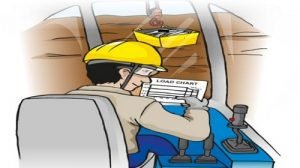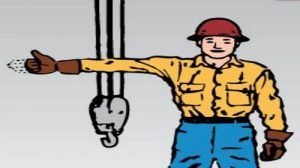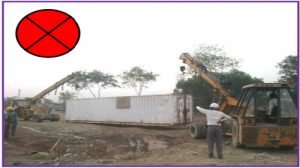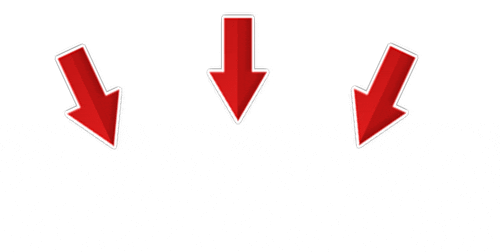HYDRA cranes and Mobile Hydraulic cranes are widely used in the Indian Construction Industry for loading, unloading, and transportation materials. Mobile cranes are manufactured in compliance with ASME–B.30.5 standard whereas hydras are manufactured based on vendor engineering standards.
Hydra designs & manufacturing are not covered under any Indian/International standards or Codes. Indian and Global statistics show that most of the crippling injuries and fatalities related to Hydras and mobile cranes can be attributed to basic easily preventable hazards.
A case in point is an incident that recently occurred at one of our active construction sites where a worker was injured when he was struck by the front wheel of a Hydra crane while reaching over the tire to retrieve a sling stored on the crane’s chassis.
Upon investigation, it was found that the operator was busy talking on his mobile phone and suddenly reversed the crane while the injured person was in the line of fire.
POTENTIAL HAZARDS AND RISKS
- Equipment failure
- Toppling
- Hitting a person or material
- Heavy wind
PERSONAL PROTECTIVE EQUIPMENTS
- Appropriate safety helmets must be worn at all times at all sites.
- Appropriate safety footwear must be worn at all times in all sites.
- Approved reflective jacket must be worn at all times in all site.
DON’Ts
- Do not overload, always lift up to SWL.
- Do not use mobile phones while operating.
- Helper shall in no case be asked to operate,
- Do not operate in heavy wind or extreme weather conditions.
- The material should not be transported.
PRE-OPERATIONAL SAFETY CHECKS
- TPI report must be displayed in the operator’s cabin.
- The licensed operator shall only operate.
- Daily Inspection checklist to be duly filled and signed by operator & safety personnel.
- Seat Belt must be installed and used.
- SWL must be marked on the hydra .
- Fire Extinguisher must be fixed in the cabin.
- Soil and ground condition must be checked & leveled.
- All lifting tools & tackles must be validated by a Competent person as per Sec 29.
OPERATIONAL SAFETY CHECKS
- Safe load indicator must be in working condition.
- Hoist Limit Switch must be operational.
- Safety latch of hook must be there.
- Oil leak must be checked.
- Wire and slings free from any damage.
- Head and tail lamps must be in working condition.
- Front & Reverse horn shall be in working condition.
- Boom structure condition while fully extended.
- Single point communication with the rigger.
- Condition of tyres must be checked.
AFTER-OPERATION SAFETY CHECKS
- Place all controls in off position.
- Park the hydra at designated location.
- Make visual check before leaving the hydra.
Contents
SAFETY REQUIREMENTS FOR HYDRA CRANE OPERATION
Hydra crane safety

- Must possess a valid license [HMV] issued by the RTA [State Regional Transport Authority].
- Ensure that the crane/hydra has a valid Certificate and TPI of Test and Examination issued by an Authorized Examiner.
- Refer to the load chart and identify the safe working load(SWL) of the crane/hydra. Be familiar with the crane operations and its controls.
- Conduct operational tests on all limiting and indicating devices (SLI, Over hoist limit switch, Boom limit switch, Boom limit cut off switch) under the no-load condition at the start of every shift.
- Ensure the ground condition has been assessed safe for crane travel and lifting job before starting any lifting job. Report any unsafe ground conditions to the Job Supervisor.

- Hoist a load only after a clear signal is given from the signalman.
- Identify the weight of the load and ensure it is within the safe working load (SWL) of the crane/hydra before hoisting/lifting.
- Avoid any sudden movement such as jerking or stopping the crane/hydra abruptly.
- Ensure all parts of the crane and load remain at least 3 meters away from overhead power lines.
- Do not leave cranes unattended while a load is suspended in mid-air.
- Do not operate cranes in severe weather conditions such as rain, strong winds, or under poor lighting conditions.
- Update regularly the Mobile equipment Operator’s checklist.
- Report any failure or malfunction of the crane to the concerned supervisor. Take malfunction cranes out of service until repairs are made.
CLICK HERE FOR 👉 24 Safety checks to perform before putting your crane in operation

- Ensure that cranes are adequately and securely blocked while on a slope.
- NEVER use Hydra cranes for tandem lifting (lifts involving two or more cranes).
- Hydra crane shall not be used for carrying or dragging destabilized loads.
- Ensure that the speed limit without a load is restricted to a maximum 5 kmph and the speed limit with a load is restricted to the walking speed of the escorted person.
- Ensure that taglines are attached to the load which allows workers to pivot the load as it swings on the crane’s hook to avoid collision with objects.
- Never use MOBILE PHONES (texting, talking etc.) while operating equipment.
CLICK HERE FOR 👉 EOT CRANE SAFETY
Workplace safety is more than just complying with a few safety rules. Applying common sense behavior at the workplace can eliminate many people from getting hurt.
Everyone at the workplace must have specific safety responsibilities and a mutual understanding of who is responsible for what is essential.
Be aware of the hazards and risks while using Hydra cranes. Ensure adequate safety measures(Hydra crane safety) before and during job execution are fulfilled. Your constant vigilance, timely and prompt actions could eliminate major incidents.
Safe operating procedure for Mobile crane
CLICK HERE 👉 SOP MOBILE CRANE
CLICK HERE FOR 👉 CRANE ACCIDENT EXAMPLE
Lifting plan sample
Also, read this:
SHARE THIS ARTICLE WITH YOUR FRIENDS







Thanks for sharing Lesson Learned that will improve our safety in the workplace
Thanx sir for a wide information
Hydra crane are widely used in southern part of india , where I have seen without Third party certificate and less competent person handling it. Every cost reduction activity from the management is chance of unsafe condition and unsafe act.
I think I’ll hire someone to lift the air conditioner I have in my home using a crane. I’ve decided that I want my old unit replaced since it’s already too bulky and expensive for me to maintain because my repair bills for it are getting too high, and it’s all because the unit is 20 years old already. Thanks for the tip that I should be aware that the workers should ensure that the ground they’re working on is safe for a lifting job, so I’ll be sure to ask the ones I’ll hire about that.
Thanks for sharing about crane safety have a look at
Crane Service
A Good piece & very Important for Infra & Const. Industry.
Siva Rath